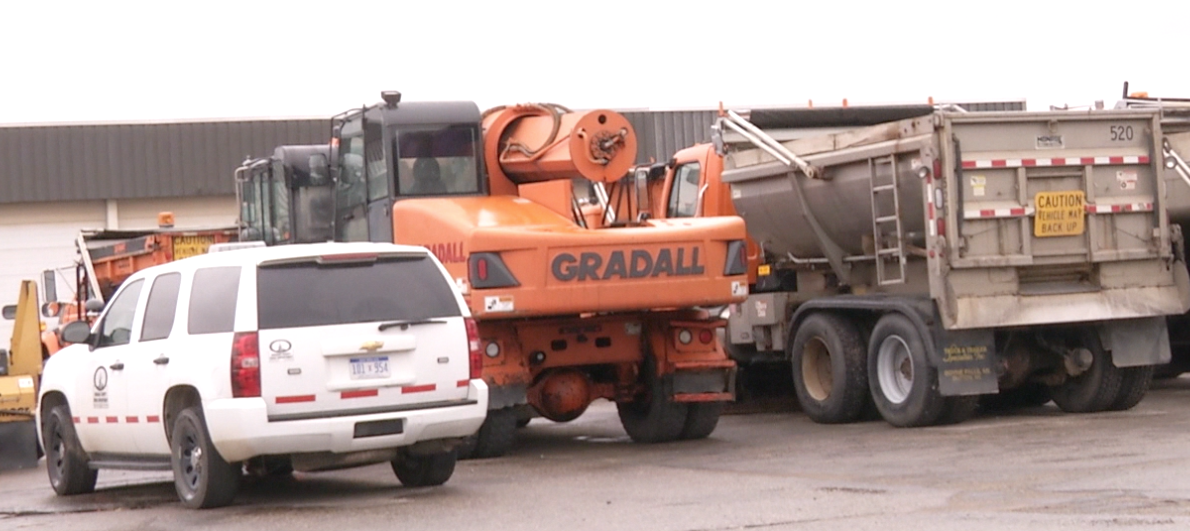Preparing For Winter Roads
- Published: 12/2/2016
- Comments
INGHAM COUNTY - With the recent light snowfall, the Ingham County Road Department is prepared for the winter weather to come.
"It's typically light in November and December, but obviously as we get further into winter, they'll be a little bit more," said Bill Conklin, Managing Director of the Ingham County Road Department.
Some road commissions buy salt trucks, but in Ingham County, they build our own. We convert dump trunks into salt trucks by buying pieces of a snow plow and assembling it.
"What we're doing right now is preparing for winter maintenance, putting salt and sand boxes in the truck. We're all filled up with salt and we're just waiting to react to the weather when it comes," Conklin said.
The new trucks have a side wing plow to help pave the typically wide roads of subdivisions and primary roads.
The road department stays busy, even when there's no snow on the ground.
"In the early season here we typically have freezing conditions that may occur, and we salt for that, we have night shift on, in the Meridian area there's a night shift person on and they salt as necessary," Conklin continued.
They also work to fix potholes and essentially building the salt trucks from scratch.
"Any patching that needs to be done they do but potholes are more of an issue in the late winter- early spring so really what they're doing at this point is just getting the equipment converted over and to keep busy doing tree work," Conklin said.
As the winter weather quickly approaches, AAA offers these safety tips for driving in the snow:
•Accelerate and decelerate slowly. Applying the gas slowly to accelerate is the best method for regaining traction and avoiding skids. Don’t try to get moving in a hurry. And take time to slow down for a stoplight. Remember: It takes longer to slow down on icy roads.
•Drive slowly. Everything takes longer on snow-covered roads. Accelerating, stopping, turning – nothing happens as quickly as on dry pavement. Give yourself time to maneuver by driving slowly.
•The normal dry pavement following distance of three to four seconds should be increased to eight to ten seconds. This increased margin of safety will provide the longer distance needed if you have to stop.
•Know your brakes. If you have anti-lock brakes (ABS) and need to slow down quickly, press hard on the pedal-it’s normal for the pedal to vibrate a bit when the ABS is activated
•Don’t stop if you can avoid it. There’s a big difference in the amount of inertia it takes to start moving from a full stop versus how much it takes to get moving while still rolling. If you can slow down enough to keep rolling until a traffic light changes, do it.
•Don’t power up hills. Applying extra gas on snow-covered roads just starts your wheels spinning. Try to get a little inertia going before you reach the hill and let that inertia carry you to the top. As you reach the crest of the hill, reduce your speed and proceed down hill as slowly as possible.
•Don’t stop going up a hill. There’s nothing worse than trying to get moving up a hill on an icy road. Get some inertia going on a flat roadway before you take on the hill.
•Stay home. If you really don’t have to go out, don’t. Even if you can drive well in the snow, not everyone else can. Don’t tempt fate: If you don’t have somewhere you have to be, watch the snow from indoors.


 Spanish
Spanish Chinese (Simplified)
Chinese (Simplified) Korean
Korean French
French German
German Hindi
Hindi Urdu
Urdu Japenese
Japenese Arabic
Arabic Russian
Russian Farsi
Farsi
